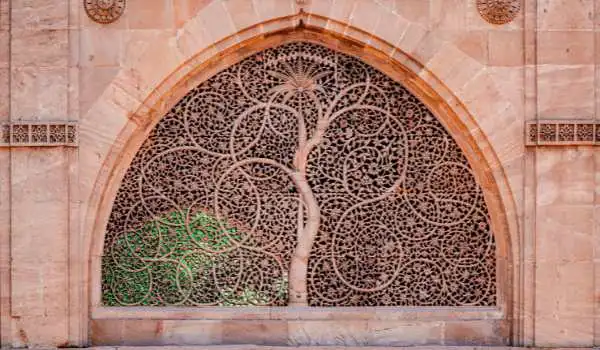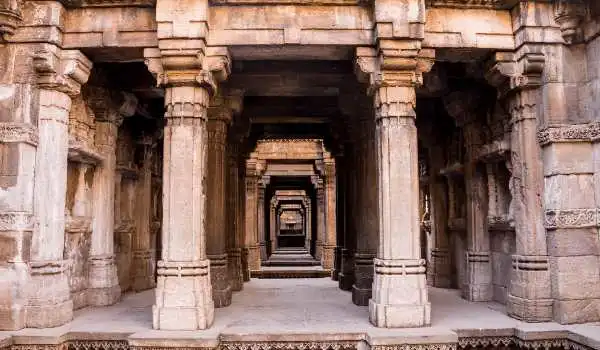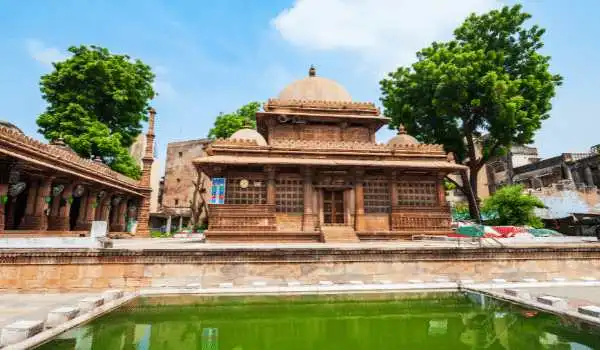Tourism in Ahmedabad has a big impact on the Gujarat economy.
It has a lot of history, Islamic architecture, and important Hindu temples.
Ahmadabad’s architectural history has been added to the World Heritage List by UNESCO.
Tourists come to the city because it is one of the most peaceful in India.
For religious reasons, people often go to Ahmadabad. They also like to look at the city’s beautiful architecture.
Textile and lacquer work are among the city’s best-known crafts, but it also has a lot of other kinds.
The government of Gujarat set up the Ahmedabad Tourism Board (ATB) in 1960 to encourage people to visit this old city.
The Ahmedabad Tourism Board (ATB) organizes festivals and cultural events all year long so that tourists can enjoy everything Ahmedabad has to offer, including its cuisine, music, dance, crafts, and architecture.

What draws tourists to Ahmadabad?
Ahmedabad has a lot of history and is known for its handiwork.
It’s one of the most peaceful cities in India.
It was the home of the Mughal Emperor, Jahangir, in the 1800s.
In India, it has one of the oldest and largest libraries in the world and one of the largest in the world.
The city has palaces and mosques, and many are open to tourists.
It’s the same in both public and private nursery schools: Gujarati is taught to children who speak it.
The city also has a lot of Sanskrit schools that teach students how to speak this ancient Indian language.
When is the best time of year to visit?
The warmest month are January and February.
November and December are the coldest months of the year, so they are the worst.
At this time of the year, it’s very hot; in June and July, this is when it’s the hottest. The evenings are very cold, and the mercury can rise.
On July 13, 2017, Ahmedabad had its lowest temperature ever.
Why should you visit Ahmedabad?

Ahmedabad is a very green city. It is near the Western Ghats.
Many streams and rivers of water cover its lush green foliage when it rains in the monsoon season.
Cold winds from the Arabian Sea help keep the summer heat at bay.
Winters in Ahmedabad aren’t too cold, and the springs are nice.
There are many popular ways to see the city, as well as a few must-sees.
The Ahmedabad Tourism Board
Products made of natural materials, like clay or stone, can be bought.
Wood and cane handicrafts make up a big part of the crafts made in Ahmedabad.
The city makes wooden Kalis and laths, wooden toys, hollow brass bells and bells made of brass alloys, enameled enamels, pottery, and polychrome ceramics. It also makes hollow brass bells.
Several of Ahmedabad’s pottery patterns are made to order by people from other parts of India and worldwide who want them.
In Ahmedabad, an international silk industry makes dyes and prints and textiles woven and handwoven.
The city also makes pottery and metalwork from a wide range of materials, including stoneware made from clay from the area.
It has been the center of Indian weaving art since the Mughal era.
Some of Ahmedabad’s religious tourism Spots

People have been living in Ahmedabad for more than 7,000 years, since the time of the Harappans. Ahmedabad is about 70 km south of the border between Gujarat, Maharashtra, and Rajasthan; its history goes back that far, too.
It is important to Hindus and Jains because it is a place of worship and history for these groups.
Ahmedabad is thought to be one of the world’s oldest cities that hasn’t been abandoned.
The 3,500 items in its Archeological Museum are:
- Sculpture and inscription.
- Silver and brass items.
- Sculptures of gods and goddesses.
- Manuscripts from the 16th and 17th centuries.
- A painted niche with a chariot.
The museum also has a lot of old maps, manuscripts, and other artifacts.
Conclusion
Ahmedabad has long been known for its architecture and history.
It has been named a UNESCO World Heritage site.
Besides tourism and handicrafts, the city also has a lot of traditional businesses.
Ahmedabad has a lot of religious and cultural places that people from all over the world come to see.
Ahmedabad is near many natural attractions, like the Sabarmati River and the Sabarmati Ashram.
The city was built in 1419 by the powerful Babi Tribe of Western India.
When Bhai Manekchand Vachan set up Ahmedabad as a district in 1565, it was called Ahmedabad.
The Surat Sultanate ruled it for a while in the 16th century, but it was not always that way.
In the early 1800s, Gujarat was taken over by the Mughal Empire.
If you enjoyed this post, please spread the word and leave a comment. If you like, you may also read my other article: Dholera: India’s Largest City Development Project
